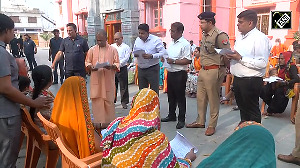While creativity means the generation of new ideas or concepts, innovation can be defined as idea selection for a specific application, its development and commercialisation. Companies and individuals can build their competence in both creativity and innovation.
The brainstorming process is a tool that can help. It requires members of a group to express ideas that are built upon and recorded. The ideas are evaluated, combined, improved and changed until the group reaches a final resolution of the problem.
Brainstorming has many applications but it is mostly used in product development, for new products and improving existing ones. It also forms the foundation of other idea generation tools such as Synectics, an approach to creative thinking developed by W J Gordon. The Synectics approach tries to overcome some shortcomings of brainstorming.
Brainstorming is used for problem solving to discover issues, root causes, alternative solutions, impact analysis and evaluation. Other applications include process management -- finding ways of improving business and production processes and business planning to develop and improve the product idea. Brainstorming can, therefore, be an effective tool for innovation as well as improving existing products.
While the term "brainstorming" is often used frivolously, it is actually a technical approach to finding innovative ideas that was developed by A F Osborne in 1941. He referred to it as "think up" sessions.
Brainstorming is a group problem-solving technique intended to help members develop innovative new approaches to a problem in an unthreatening environment. Although almost every organisation claims to use the brainstorming tool, it is often ineffective because of lack of planning.
If followed with precision, brainstorming can yield creative ideas. There are three critical factors that determine the success of a brainstorming effort. First, the group must produce a large number of ideas, thus increasing the chances of finding the best possible solution.
Second, the group must be certain to withhold judgement of ideas as they are expressed, since negative thinking of one group member can make others less willing to participate and thus derail the process. Third, the moderator must create a positive environment and channel creative energies in the direction required.
The formal process requires a clear definition of the problem in a short question form. If the problem cannot be defined in one question, it can be split into sub-questions. A background memo giving the problem question is sent out to participants at least two days ahead of the session.
The brainstorm panel usually consists of five core project members, five guests from outside the project but with affinity to the problem, and one idea collector who records the suggested ideas. If more than one participant has ideas, the moderator lets the most associated idea be presented first. This selection is done by observing the body language of the participants or by asking for the most associated idea.
After the presentation of ideas, the moderator organises them based on the goal and encourages further discussion. Additional ideas may be generated this way. The ideas so generated are categorised and the entire list is reviewed to ensure that everyone understands the ideas. Duplicate ideas and unviable solutions are removed.
Since brainstorming involves people from both within and outside the project, it is helpful in breaking out of established patterns of thinking. It helps develop new ways of analysing the issue, especially when there is a need to develop opportunities, to improve the service being offered or when existing approaches aren't giving the desired results.
Shoji Shiba, the renowned guru in Breakthrough Management, says that for an idea to be successful, we need an initiator's breakthrough or idea generation; an entrepreneurial group's breakthrough, that is, the technical feasibility; and a marketer's breakthrough, that is, market feasibility.
To enable Indian companies to benefit from his approach to Breakthrough Management, Shiba has been working with CII's Learning Communities for the past two years. CII has also launched the CII Clayton Christensen Institute to enable companies to generate ideas by finding out "what are the jobs done" by a particular product.
Dr Surinder Kapur is chairman, CII Mission for Manufacturing Innovation, and chairman and managing director, Sona Koyo Steering Systems.






 © 2025
© 2025